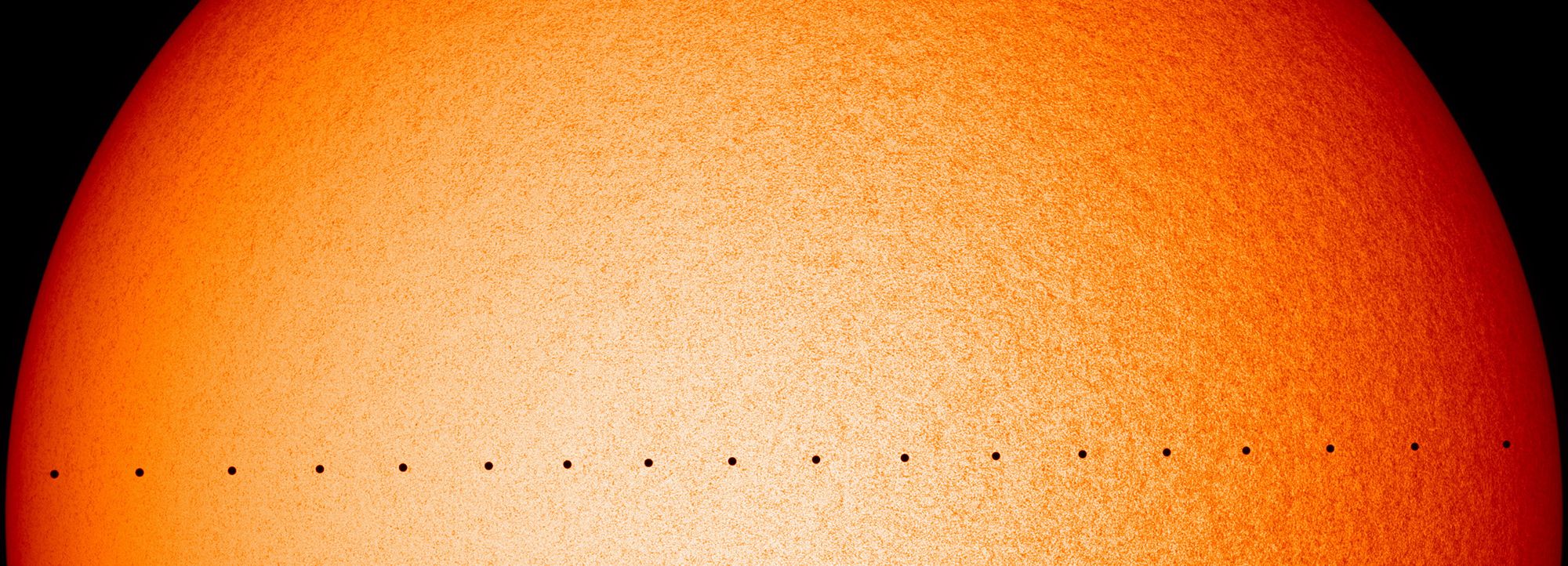
This feature appears in the Fall 2019 (vol. 48, no. 4) issue of Mercury magazine, an ASP members-only quarterly publication, and is part of our "Spotlight on Hawai'i" special coverage.
Cold mountain winds whipped across hardened lava fields on July 15th as protestors bearing Hawaiian flags and winter coats took to the base of Hawaii’s sacred Maunakea to create a human barricade across the mountain’s single access road.
Signs and banners reading “Protect Maunakea” and “Road Closed Due to Desecration” were held by both young and old kia’i, or protectors, taking a stand against what they believe to be the most recent in a long line of exploitative actions against Native Hawaiians: the building of the Thirty-Meter Telescope (TMT).
If built, the telescope—a $1.4 billion dollar collaboration between Canada, Japan, China, India, the California Institute of Technology, the University of California and the University of Hawaii—would be one of the largest telescopes in the world and would join 13 other telescopes at the top of Maunakea, a mountain which Native Hawaiian religion believes is the point at which their gods touch the Earth.
The protests against this project, which have continued since mid-July, have brought international attention to the mountain and to date have successfully prevented building preparations to begin on the TMT, as well as temporarily halting research at many of the other telescopes already dotting Maunakea’s ridge, including the Keck Observatory and Caltech Submillimeter Observatory. While limited access to these telescopes has been restored, the Associated Press reports that altogether the telescopes on Maunakea lost 2,000 hours of research time—the longest sustained period of stalled operations since telescopes began appearing on the mountain in the 1970s.
Disinformation has worked to distort details of narratives on both sides of the debate, but the protestors and those in favor of the telescope tend to agree on one point: it’s not just about the TMT.
Bigger Than the TMT
The TMT has come to symbolize the historic disenfranchisement of indigenous Hawaiians through exploitation of the island’s assets and ignoring of native voices. But, while there may be agreement from both parties about the injustices Native Hawaiians face, there is considerably less agreement about who that blame belongs to and whether the TMT can still be built on Maunakea in good conscience.
While more public attention has been drawn to the issue this summer by the protests, the decision over the TMT’s fate has been an on-going conversation on the island for ten years now, and one that followed serious mismanagement of previous astronomy projects on the mountain, says Kealoha Pisciotta, a former systems specialist for the British-Dutch-Canadian telescope facility at Maunakea and a TMT critic.
“We as the people who literally ‘own’ the mountain have a right to say ‘Hey, thirteen of the richest nations on the planet already have their observatories. There’s a legal limit, which is thirteen, and we’re putting our foot down’,” says Pisciotta. “They built all of those telescopes without actually doing environmental impact statements… We forced them to do one and when they did do it … the executive summary pretty much said that the impact is very serious.”
The University of Hawaii, which is responsible for managing the telescopes on top of Maunakea and leasing land for new ones, was sued by Native Hawaiians in 2017 over harmful cultural, archaeological, historical and natural resource impacts that had taken place on Maunakea since the erection of the first telescope on the site in the 1970s. Environmental impact reports found that these effects had continued unchecked on Maunakea for decades.
Roy Gal, an astronomer and head of public outreach at the University of Hawaii’s Institute for Astronomy, agrees that the university may have mismanaged the use of Maunakea in the past, but contends that efforts have been taken since then to rectify the situation.
When TMT officials decided on Maunakea in 2009 as the site of their next telescope, however, Pisciotta says it was a clear message that those helming the project had not heeded previous concerns regarding the environmental impact these telescopes were having to the mountain. Original plans to construct the TMT in October 2014 were disrupted by protestors and the telescope’s building permits were revoked by Governor Ige on the grounds that “due process” hadn’t been followed in their initial approval. After completing contested case hearings, the project’s construction permit was reinstated in October 2018.
While Pisciotta maintains that this decision was arrived at unjustly, proponents of the telescope, including TMT Vice President of External Affairs Gordon Squires, say the project has followed protocol from the beginning and is poised to not only advance science with the work of TMT but to add value to Hawaii’s economy as well.
With sophisticated equipment and an array of mirrors measuring tens of meters across, Squires says that the size and sensitivity of the TMT as well as the proposed location at Maunakea positions it perfectly for deep-space observations, like identifying spectral signatures of the Big Bang and exoplanets, as well as carrying out detailed observations of our own solar system, including a closer look at Jupiter’s moons. Even more exciting would be the discoveries the TMT could make that haven’t yet been predicted, such as new insights into dark matter and dark energy, adds Squires.
In a nutshell, the TMT’s mission is to discover what the universe is made of and elucidate our place in it.
And Maunakea, says Squires, is the perfect location to achieve these goals. The tallest peak in the world (as measured from its seabed base), Maunakea’s 4,205 meter (13,796 ft) summit is located above approximately 40 percent of the Earth’s atmosphere and, as a result, experiences cold, dry conditions—all prerequisites for capturing sharp images using ground-based telescopes.
Finding a Way Forward
However, Pisciotta argues that these long-term scientific goals shouldn’t take precedence over damage being incurred to our planet and communities.
“Modern science, in astronomical terms, is lacking a kind of relevancy to the average person,” Pisciotta says. “I support astronomy… however, it doesn’t really translate into helping the people and the Earth right now.”
This perspective is one that scientists around the world have started to speak-up about as well, as demonstrated by an Open Letter to the astronomy community with over 1,000 signatures from STEM graduates and undergraduates that condemn the actions taken against Maunakea protestors in efforts to continue TMT construction, including the detaining of several Native Hawaiian elders during protests.
However, looking more broadly at those who support the telescope complicates the debate even more. Just as not all scientists support the telescope project, not all Native Hawaiians oppose it.
“I agree that it is important for the native Hawaiian community to stand strong on issues that affect Hawaii, even if the opposition of TMT has been that rallying point,” Brialyn Onodera, an engineer at the National Solar Observatory in Hawaii, says. “At this point I don’t think I have any criticisms about the project after reading extensively about the various issues concerning building an observatory Maunakea and how TMT seeks to rectify those issues.”
Onodera says she’s always had an interest in science and engineering and that the observatories on Maunakea helped spark that in her. Her internship at the Keck telescope during the summer of 2015 coincided with the first TMT protests, says Onodera, but she’s been strongly on the side of the telescopes from the beginning. Onodera believes that the TMT has made effective efforts to rectify shortcomings brought up by protestors, including making sure the telescope will give value to the island through creating STEM education funds. Onodera also believes the TMT project at its core is honoring Maunakea’s sacred connection to the heavens, not desecrating it.
“What I want most for them to understand is TMT is modern astronomy and that it is simply an evolution of an art that Hawaiians view as sacred,” says Onodera. “Ancient Hawaiians were widely known as the best naked eye astronomers of their time and extensively used the information they gained from night observations to improve their everyday lives. In the past century we have adapted and evolved to use technology in our lives and practices to implement culture values into modern STEM practices, why can’t TMT represent the same thing?”
When asked about Native Hawaiians who supported the TMT, Pisciotta says they’re often too young to have seen the scope of the exploitation enacted on the island through astronomy and other projects. While Onodera may fall into this category, another vocal proponent of the TMT certainly doesn’t.
Like Onodera, a traditional Hawaiian navigator named Kalepa Baybayan believes that the TMT is an extension of Hawaii’s ancient traditions of navigation and astronomical observation. He also says that allowing astronomy projects like TMT on the island is essential for diversifying and strengthening the Hawaiian economy, which otherwise is largely propped up by tourism.
“We have very little industry here that we can export,” Baybayan says. “Tourism is our number one economic driver, so when you have an asset [like astronomy] that you can use to benefit an island community that really has very limited sources to do so, we would be wise to take advantage of that.”
These stances suggest more division than they do solidarity, however. A recent September poll conducted by the Honolulu StarAdvertiser surveyed 800 Hawaii voters and 400 native Hawaiians and found that support for the TMT on Maunakea had dropped by nearly a third from numbers recorded in March 2018 following the summer’s protests, from 72 percent to just 27.
In a statement responding to the poll numbers, Hawaii’s Governor David Ige said the results captured the sentiment of the island.
“The poll numbers are consistent with the desire of many residents to accommodate both concerns,” said Governor Ige.
However, Governor Ige was also in support of a new pamphlet released just after the poll numbers by the county’s mayor, Harry Kim, called the “The Heart of Aloha, Maunkea, a Way Forward,” which laid out grievances while still advocating for “a way forward” with the TMT project.
“This presentation is beyond a ‘yes’ or ‘no’ of the TMT project,” Mayor Kim wrote in the pamphlet. “This is about asking Hawai’i’s people to come together and finding a new path to go forward in a good way.”
Questions of Sovereignty and Science
While these poll numbers and the subsequent pamphlet don’t necessarily bring clarity to the issue, they do help reveal another underlying problem: While there may be agreement from both sides that Native Hawaiians deserve sovereignty over their land, how will it, and the island’s economy, be managed afterwards?
Proponents of TMT like Baybayan argue that astronomy is the best way to use the island’s assets and provide future opportunities for Hawaiian children, but opponents of the telescope like Pisciotta argue that stepping away from the capitalist culture brought to Hawaii (by projects such as astronomy) is instead what the island needs.
Regardless of how this question is decided in the future, the debate over the TMT is quickly reaching the end of its rope, scientist and head of TMT operations Christophe Dumas says.
“I would hope that in the next two-three months that a decision is made,” says Dumas. “Because that would allow us to start construction in the spring of next year, so we would have only lost an extra year compared to the original plan.”
Should the stalemate continue, or a decision be reached against the TMT, Dumas says it would be time for the project to pack its bags and instead head to its alternate site at La Palma, one of Spain’s Canary Islands.
“We hope for solutions to be found rapidly, although the chances to resolve such issues in a timely manner appear smaller every day,” says Dumas. “In the meantime, we are preparing the grounds for starting construction as soon as possible, hopefully in Hawaii, if not on our alternate site.”
Dumas says that the La Palma site is less optimal for the kind of science TMT hopes to do, primarily due to it being lower in elevation and more humid, but that much of the science would not be lost should the project make the move. Instead, it would mostly be slowed down.
However, the removal of the TMT from Maunakea would potentially make it more difficult for the University of Hawaii to maintain its lease, which is already set to expire in 2030 and would require the removal of all telescopes from the site.
It has been two months since Mayor Kim released his “way forward” pamphlet concerning the TMT, but according to Squires there hasn’t been any substantial movement one way or another. While Squires still believes in the science the TMT would do on Maunakea and believes the project has taken the correct steps throughout the process, he admits that its future remains uncertain.
“Construction around the world [of components for the] TMT has been ongoing since 2015, so over four years, so we need to start on site construction soon,” says Squires. “[And] what does “soon” mean? I honestly don’t know. This is an unprecedented situation and we are being respectful but also understanding that we are under pressure to get started.”
As for Maunakea’s kia’i, Pisciotta says they have been successful so far in their efforts and will continue to stand against the project.
“We will continue our stand until the TMT will not be built,” says Pisciotta. “They need to accept that they don’t have our clear and informed consent and that they’re violating our human and civil rights.”
Leading image: The summit of Hawaii’s Maunakea hosts 13 telescopes and the Thirty Meter Telescope (TMT) is planned to join them. [Arnie Watkins/Pexels]
—

Sarah Wells is a science and technology journalist based in Boston who’s interested in how innovation and research intersect with our daily lives. Her work has been published in Undark, Smithsonian.com, Inverse, Gizmodo, and Space.com, among others.

